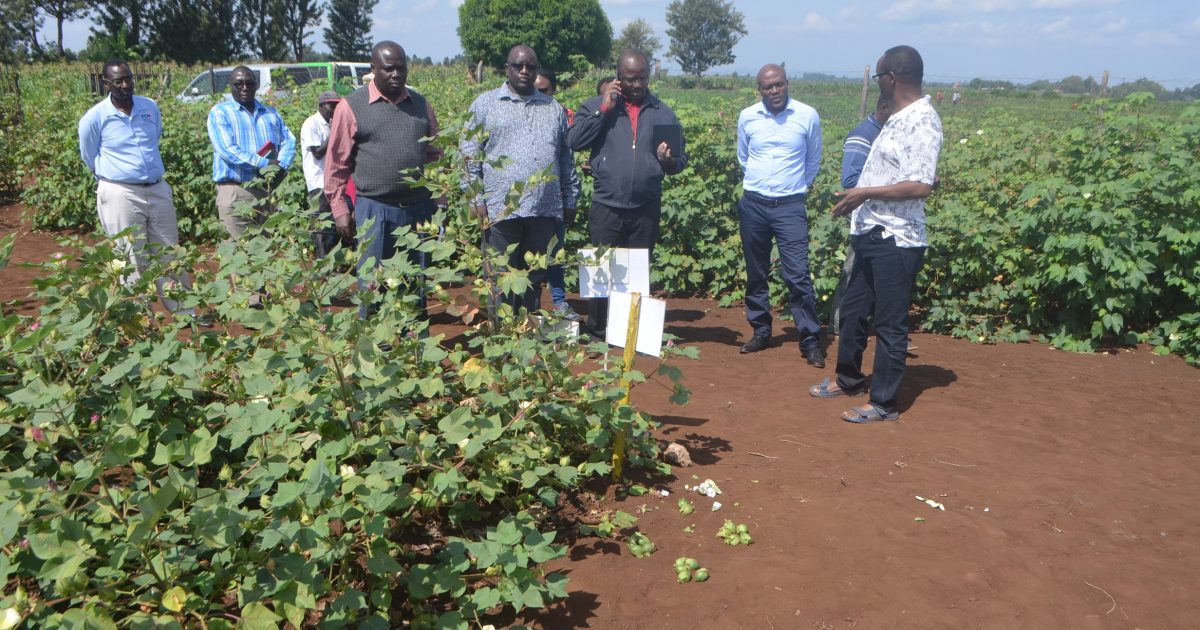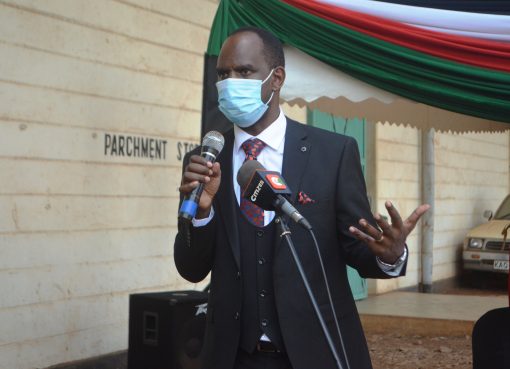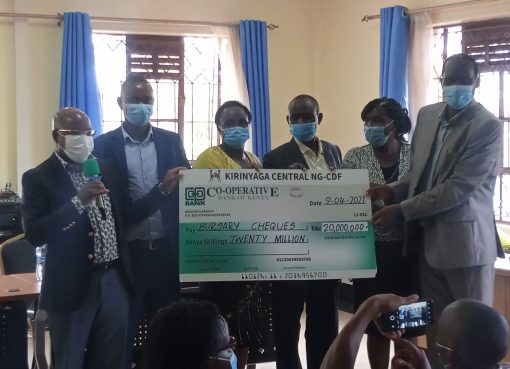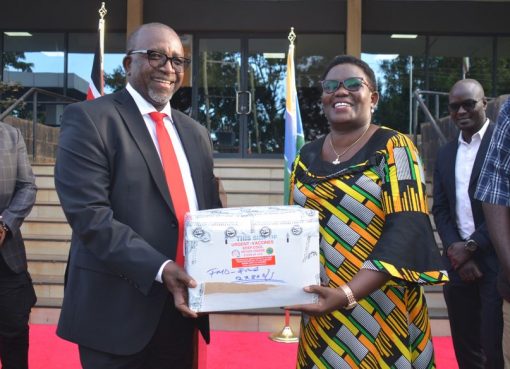The government is set to provide for the initial BT cotton seeds to farmers to plant during the forthcoming March/April long rains, a lead Crop Researcher, Dr. Charles Waturu has confirmed.
Waturu said following the approval by the Cabinet last week that the variety was safe for commercial farming in the country, there was now an elaborate plan for mass production of the seeds by both small scale and commercial farmers.
“By 2025 we will have produced enough hybrid seeds for all the farmers across the country as we embark on the fulfillment of manufacturing which is one of the Big 4 agenda President Uhuru Kenyatta is seeking to realise before leaving office,”Waturu said.
He said the news of the lifting of the GMO restrictions by the government after a Cabinet meeting last week was the best Christmas gift to both cotton farmers and the textile industry players in the country.
Through the then Minister for Health, Beth Mugo, the government imposed a ban for importation of GM foods in 2012 thereby spelling doom for the onward progression of further research on BT cotton.
The first trials on the crop were carried out in 2001 at then Kenya Agricultural Research Institute (KARI), now Kenya Agricultural Research and Livestock Organisation (KARLO), Mwea Centre with Waturu being the pioneer researcher.
“Am the happiest researcher after having worked on the BT cotton variety for the last 18 years while soon farmers will start witnessing its success as they prepare to plant the first crop next year at the onset of the long rains, “he said .
Waturu said Kenyans will no longer wear second hand clothes (mitumba) as the cotton sector was set to revive the dormant textile industry.
He said ginneries which have either been dormant or under –operated will after the first crop was harvested next year become vibrant as before thereby improving the livelihoods of the farmers.
Farmers in the county are upbeat over the development and have since urged the government to start rolling out the cultivation of the cash crop.
“I have already set aside three acres purposely for the initial planting for multiplication of the BT cotton seeds which I will then share with other farmers, “said Munene Kamau from Murinduko Ward, Mwea.
Kamau said given the hybrid variety was high yielding, early maturing and disease resistant, its returns will be certainly rewarding to the farmers.
“Once released the cotton will spur economic development by creating jobs in the dormant textile sector and free Kenyans from dependency on second hand clothes,” Waturu added.
He described Bt-Cotton as any variety of cotton, genetically enhanced through incorporation of a gene derived from soil-occurring bacteria to protect itself against caterpillar pests, specifically the African Bollworm, which is the most damaging pest in cotton.
The Crop Scientist said Research for Bt-Cotton was conceptualised in 2001 to address the need to manage the most damaging cotton pest, African Bollworm.
Local research he said has demonstrated Bt-Cotton yields three times more than current conventional varieties and takes between 130- 180 days to mature.
He said for the traditional variety a famer can only harvest 250 kilograms of the crop while the Bt- yields stand at 7000 kilograms per acre.
In February 2001, the then Kenya Agricultural Research Institute (KARI) through its Institutional Biosafety Committee (IBC) made an application to the then National Biosafety Committee to introduce Bt-Cotton. Confined Field Trials (CFTs) with Bt-Cotton started in 2004 in KALRO Mwea and were successfully concluded in 2010.
The commercialisation process, he noted started in 2011 culminating in a conditional approval from the National Biosafety Authority in 2016 to Monsanto Company who own the Bt technology.
‘’The approval required that the National Environmental Management Authority (NEMA) gives a clearance certificate upon conduct of an Environmental Impact Assessment (EIA),” he said.
Waturu has been demonstrating to the farmers how the variety produces bolls from the bottom to the top while the traditional one had either a single one or none at all due to attacks by the boll warms.
In June 2018, the Ministry of Agriculture Livestock and Fisheries in consultation with the Ministry of Industry, Trade and Cooperatives appointed a 12 member Task Force to oversee commercialisation of Bt-cotton.
The Taskforce through Government funding initiated EIA on the nine sites identified for National Performance Trials at Bura, Katumani, Mwea, Perkerra, Kampi ya Mawe, Matuga, Kibos, Alupe and Barwessa.
In June this year NEMA gave a clearance certificate marking the commencement of the first season NPTs in seven sites at Bura, Mwea, Perkerra, Matuga, Kibos, Alupe and Barwessa.
The trials commenced and progressed successfully to harvesting stage, paving way to the establishment of the second season NPTs which was conducted in four sites, Mwea, Katumani, Kampi ya Mawe and Perkerra during October-November 2018 short rains and concluded in March 2019.
Data from the two seasons NPTs were compiled and reviewed by the Kenya Plant Health Inspection Service (KEPHIS) after which the successful Bt-Cotton hybrids have been registered as varieties in Kenya and henceforth ready for release to the farmers.
“Successful deployment and adoption of BT-Cotton in Kenya is therefore expected to greatly benefit the country specifically the small holder farmers through realisation of better yields, higher profits from lower pesticide costs, increased cotton output, improved cotton quality and increased export revenues,“ Waturu said
Increased cotton production will spur the manufacturing sector through provision of the much needed raw material for the cotton value chain, including ginners, spinners, textile mills and apparel manufacturers while creating jobs for the youth and women.
Overall, he stressed this will improve rural incomes and reduce poverty while contributing to the realization of the Big Four Agenda in respect to manufacturing as spelt out by President Uhuru Kenyatta.
“Among the key drivers of the manufacturing sector under the Big Four agenda is cotton and textiles which makes the commodity as a strategic crop for communities in the marginal areas and mainly grown in smallholder farms.,” he said.
Added the Researcher” While the current annual domestic market demand is 140,000 bales with a potential to grow to 260,000, the industry is producing a mere 21,000 bales annually.
Low quality seeds, high input costs and susceptibility of conventional varieties to pest infestation greatly contribute to the dismal productivity, “he noted
Thus, under the ‘Big Four’ agenda, the government plans to support the textiles industry, through increased cotton production using hybrids enhanced with the Bt technology.
Other envisaged measures include, buying domestically grown cotton, improving governance in the import rules for textile products to cushion local producers and providing incentives to investors to build modern ginneries and textile manufacturing plants.
Further, the government has already started training 50,000 youths and women to be involved in Bt-Cotton production with the first batch of the trainees already graduated from Kirinyaga University this year.
The government also plans to establish 5 million square feet of industrial sheds while successful implementation of these measures is expected to increase the textile industry revenue from Sh.3.5 million to Sh.200 billion, create 500,000 cotton-related jobs and another 100,000 from the apparel sector by 2022, “the Researcher said.
By Irungu Mwangi





